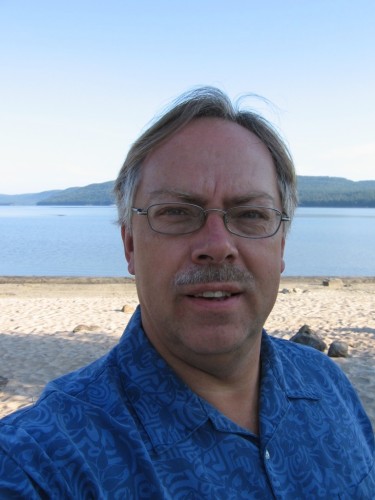Heating houses with Brown gas and the energy of the zero point
Basic information about Gaza Brown
Gaz Brown (BG), also commonly referred to as hydroxyl gas (HG) or HHO gas, is a very specific form of water, which consists mainly of H2O molecules energized in gas (non -car) form with extended OH bonds. Hydroxyl gas has very enigmatic properties, including an implosive laser flame, which in a strange way cools the air, and yet it can sublime tungsten, reaching a peak temperature exceeding 6000 C. These very strange properties cannot be explained by conventional atomic theory and thermodynamics, which generally ignore the energy "empty" nature "empty" nature vacuum, space commonly called the energy of the zero point (ZPE).
Due to these enigmatic properties, hydroxyl gas is particularly useful for heating surfaces, because it seems to offer significant "over-war" possibilities, obtaining a fitness factor (COP), which in certain combustion conditions can clearly exceed 5. It transfers about 5 kWh of heat energy for each kWh of collected electricity, obtaining COP 5. The only real difference is that the heat energy of the environment transmitted by the AC unit is easily taken into account as observable energy and easy to measure, while mysterious transmission of zero point energy (ZPE) in burning brown gas is not, mainly due to the restrictions of the existing equipment.
It should also be mentioned that the high COP factor observed under some combustion conditions can also be achieved for the production of Brown gas so that 1 kWh of electricity used using various resonance technologies produces much more gas than the one obtained using a conventional electrolyzer. As in the case of excess energy observed during combustion, resonance -based electrolysers seem to use the energy in a space vacuum (ZPE) to stimulate the water molecule. The production of excess gas can, in turn, be burned, as stated above, in order to obtain excess energy in this process, causing a multiplier effect, which was apparently achieved by S. Meyers, A. Puharich and P. Zigouras.
All these inventors were able to operate test vehicles using the brown gas electrolyzers placed inside them powered by an ordinary engine alternator, which met all fuel requirements for an internal combustion engine. Considering that the limited power of the high power alternator (with a capacity of ~ 2 kW) ultimately produces all fuel for a minimum engine with a minimum capacity of 50 kW, clearly means a total efficiency factor (COP) exceeding the value of 25, even probably much higher, when you take into account the ineffective nature of internal combustion engines, which rarely worked with efficiency above 35 percent.
The author of this article proposes a variety of such a system with a high COP factor in order to meet the heating needs of a typical single -family house with an area of 200 - 300 m2. This can be done without a reduction in living standards and significantly reduced heating costs compared to conventional natural gas, electricity or coal systems. It is also important that this can be achieved in a very simple and reliable way, with slight inconvenience for the owner of the home compared to any other heating system. The proposed system also has a very positive impact on the environment with essentially zero greenhouse gas emissions, which significantly exceeds all other combustible gas heating systems. This would be particularly important in relation to any coal -powered system that notoriously pollutes the environment.
Changing the scientific paradigm
does not need to be added that all the above arguments are out of the explanations that use conventional scientific and engineering analysis in accordance with the existing paradigm. In modern science, there is a well -rooted dogma that it is impossible to obtain more energy from the "closed system" than it is put into it. However, this is a contentious issue, because there is no such thing as a "closed system". In fact, it is well proven by the quantum theory of the field (supported by research awarded with Nobry) that all systems are open and constantly cooperate with the ubiquitous non -observable energy of space -time, usually marked as not very precise name: zero point energy.
Theoretically, this inexhaustible energy can be obtained from the ubiquitous stream of an energy vacuum using many new means that can be easily explained using a new field of quantum vacuum engineering (QVAC) based on a revolutionary new science, such as the model of the checkered theory of the Hydreno atom (lattice nested hydreno atomic model)* concepts that recognize that all systems are open regardless of superficial appearances.
Unfortunately, almost all counting scientists and engineers remain "locked" in the existing paradigm of the closed system and invariably rests the concept of collecting free energy from space, even if they often deal with all other "free energies", such as sunlight, wind and water flow in open systems. In many ways, the use of vacuum energy is no different from using a windmill, water turbine or solar panel. Simply - we are not used to the use of this generally non -observable form of energy flow, which exists significantly except for the measuring capabilities of our rather primitive instruments (>> 1022 Hz).
Heating system proposal for houses
The first step towards developing and using an environmentally friendly and cost -effective house heating system based on improvements of existing brown gas heating technologies (or other hydroxyl gases) is the need to conduct a test checking the principle of calorimmetry air for combustion. The proposed heating system must offer a significant improvement compared to competitive heating based on natural gas, which is extremely expensive in Europe. In addition, the use of GB for heating would give the possibility of at least partial independence of Poland from gas or other energy measures imported from abroad.
Gas prices in the European Union are usually more than three times higher than gas prices in the US without a reasonable reason except for the desire to profit. To effectively compete with existing natural gas heating, the proposed Brown gas system must use its full heat potential with innovative combustion and production agents to achieve the efficiency factor well above 5.
The prototype using such a system can be prepared, proven and produced in Poland or in another European Union country, provided that there are investors, open to this type of innovative projects and politicians who will not give up the energy lobby (as is the case, e.g. in Canada) and support such a project. Then, the road to clean energy based on water properties will be open. I think that Poland is in a unique situation to become a leader in the field of renewable energy among European countries at the same time to enable society to use extremely cheap heating energy.
Mark Porringa, Canada
Translation: Andrzej Wójcikiewicz


